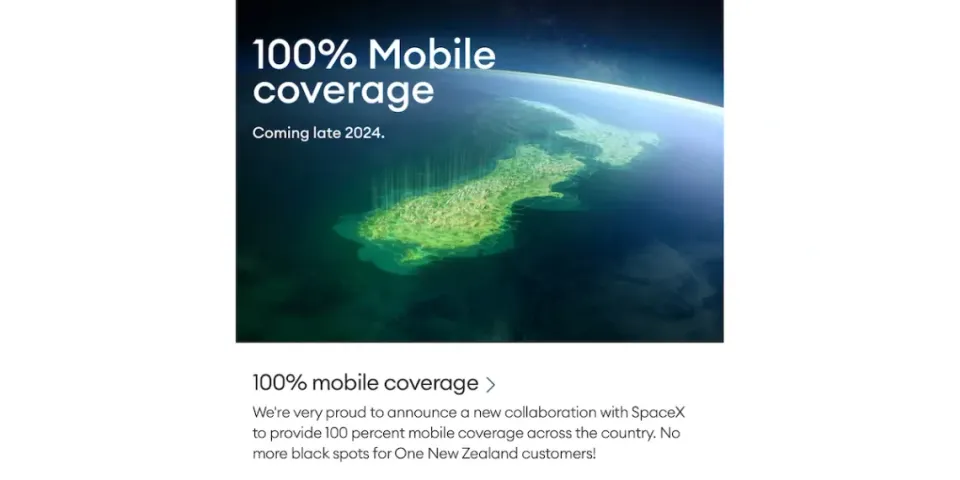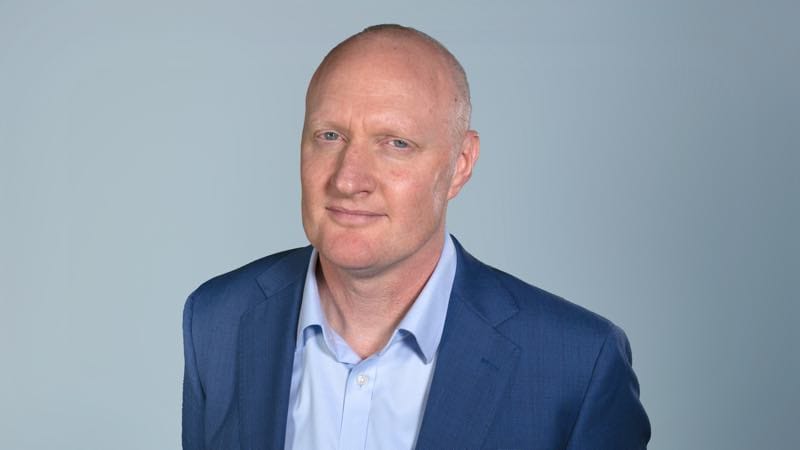100% claim lands One New Zealand in criminal court action

One New Zealand says it will ‘vigorously’ defend the criminal charges filed in court by the Commerce Commission for claims it made in last year’s marketing campaign promoting “100% mobile coverage”.
In a media statement, One NZ head of corporate affairs Nicky Preston says: “The charges relate to a three-month advertising campaign about a new network technology, which was approximately 18 months away from launching, and was not being marketed for purchase.”
Wider implications
Preston warns the Commerce Commission litigation could have implications across the wider telecommunications sector over how marketing can describe coverage and service availability.
In recent years the Commission’s telecommunications team under the oversight of Telecommunications Commissioner Tristan Gilbertson has worked to tighten rules around the marketing of mobile and broadband services. See the next story for another view of this.
Preston says: “Our language was consistent with long-standing practice of how coverage is described by the industry and the regulator in New Zealand.”
Fair Trading Act
Nevertheless, the Commerce Commission says it believes the marketing may have breached the Fair Trading Act. The Commission has not disclosed the number of charges it is filing, nor any specifics, but the usual practice in cases like this is to file multiple charges.
One NZ made the claim in April as the company changed its name from Vodafone. At the time it told customers there would be 100 percent coverage in New Zealand during 2024.
Starlink deal
It was referring to the deal it has with SpaceX to use the Starlink network to deliver calls, data and messages to ordinary handsets. This would use near blanket coverage offered by the low earth orbit satellite network.
Even at the time of the marketing campaign that deadline looked like an heroic assumption. Companies controlled by SpaceX owner Elon Musk share a long history of not delivering on promised deadlines.
While it is still possible One NZ might squeak some kind of limited beta customer trial of satellite to mobile services before December 31, it clearly will not be able to offer its customers the promised 100 percent coverage this year.
One NZ has misleading marketing form
One NZ is no stranger to the Fair Trading Act. In 2021 One NZ, then known as Vodafone, was “found guilty of engaging in conduct that was liable to mislead consumers in relation to its FibreX branded broadband service.”
It was guilty of nine Fair Trading Act charges and faced a $3.675 million fine, the largest penalty of its kind in New Zealand history.
There are similarities with this case. Commerce Commission Deputy Chair, Anne Callinan, says the Commission is “concerned that the headline representations made during the campaign could be misleading and distort competition in the telecommunications market.
“In our view, the claims were likely to mislead consumers because they gave an overall impression that all currently available mobile services — text messaging, voice calling, and data — would be supported and available from 2024 and that consumers would have access to instant communication from all locations in New Zealand when, in fact, that may not be the case.”
Absolute and unqualified claims
She goes on to say the campaign “featured absolute and unqualified claims about mobile coverage”.
The Commission highlighted its concerns that when it arrives the initial service will only transmit text messages and coverage will only be in places where phones have a direct line of sight to the sky. For now service will not be instant with an average two minute delay.
Callinan says not including these limitations may have influenced customers’ purchasing decisions.
Stop now
The Commerce Commission issued a Stop Now Letter to One NZ on July 5 2023 for representations made in its campaign promoting “100% mobile coverage. Launching 2024.
That letter was signed by Kirsten Mannix, the then acting head of the Commerce Commission’s Fair Trading Branch and said the regulator is "concerned that One NZ has engaged in, and continues to engage, in conduct in breach of the Act and that customers and competitors are being harmed by this conduct.
At the time One NZ defended itself saying: “The fact is the Starlink space satellites that enable the service will cover 100 per cent of New Zealand, so we think it’s valid to talk about 100 percent mobile coverage.”
One NZ stopped its marketing campaign at the time of the stop letter, but said it had planned to finish the campaign anyway.
Chorus calls for tighter broadband marketing rules

Chorus has criticised mobile carriers for concealing key performance information in their 5G broadband marketing. It says this leaves New Zealanders without the data they need to make informed choices.
In its submission to the Commerce Commission’s updated broadband marketing guidelines the company has called for the quarterly Measuring Broadband NZ report to include full 5G wireless broadband data: “so customers can see the reality behind the marketing hype.”
Julian Kersey, Chorus’ chief corporate and regulatory officer says consumers are left guessing about whether the performance they are being charged for is being delivered.
How do you know if it is delivering?
He says :”Consumers can’t know if 5G is delivering what’s promised on the tin - because the 5G tin doesn’t say anything at all. This has to change if we want a fair market where Kiwis know exactly what they’re signing up for.”
Chorus also wants consumers to understand that wireless broadband performance varies with performance dropping when networks are busy.
The company is also asking for 5G fixed wireless broadband to be held to the same standards as other broadband options.
One New Zealand’s EonFibre fibre brand debuts
One New Zealand says it has now officially launched its wholesale fibre business, Eonfibre.
It says the new subsidiary uses technology from Ciena, including WaveLogic 6 Extreme. This allows it to double network capacity on certain segments, offering up to 1.6Tb/s per wavelength.
One says it adds to network resiliency and supports high-demand applications like AI.
EonFibre’s network includes 11,000 km of fibre cables, metro fibre rings and access to international connections via the TGA, Hawaiki and Southern Cross cable networks.
Mobile termination rates could be deregulated in ComCom review
The Commerce Commission is set to decide on the future of mobile termination rates regulation in the next year.
It says there is a case for removing regulation. This week it made a draft decision to consider deregulating and wants feedback before it moves.
Mobile termination rates are paid when a user on one mobile network makes a voice call or sends a text message to someone of a different network. In the past carriers set the rates at relatively high levels which acted to make it harder for a new carrier to gain traction in the market.
Stifling
Specifically Telecom NZ and Vodafone used MTRs to stifle 2degrees growth. The company took off and competition intensified after the Commerce Commission stepped in with the original MTAS.
The market has changed dramatically since then with voice calls and SMS diminishing in importance. At the same time, the arrival of over the top services that use data services for voice calling or short text messages has provided a route around any MTR barriers.
Telecommunications Commissioner, Tristan Gilbertson, says changing consumer behaviour means there is a case for considering the removal of regulation.
Over the top
He says: “It’s also likely that... OTT alternatives, combined with a shift in the market away from voice calling and towards data services, mean that regulation of these services may no longer be necessary.
“If we were to proceed with removing MTAS regulation, this could take the form of complete deregulation, or a more progressive withdrawal of regulation, depending on the balance of competition and consumer interests”.
It’s unlikely there will be much opposition to the Commerce Commission considering MTAS deregulation and it looks increasingly as if it could be time to move on from what was a vital stage in the evolution of New Zealand’s mobile market.
In other news...
Consumer NZ reveals 2024’s best and worst mobile phone providers
Consumer NZ found Skinny comes out tops for customer satisfaction and value while 2degrees is close behind. One New Zealand came out worst of the companies measured scoring below average on everything, but you probably already knew that.
IRD goes to market for office connectivity deal
Rob O’Neill:
Inland Revenue is going to market for providers of WiFi, LAN and internet connectivity to service its 20 nationwide sites and 4,100 staff in a deal that could last up to a decade.
We have the ratings for Stuff’s ThreeNews. What story do they tell?
At the Spinoff Duncan Greive looks at the ratings data to see if the project that sees Stuff supplying Three with news is working. The story is important from Download Weekly point of view because the two companies are setting themselves up to be news providers when there is no more linear television and news is delivered online, on demand.
Amazon Prime Video NZ unveils new features - and confirms ads are on the way
The NZ Herald’s Chris Keall looks at changes to Amazon’s streaming service. Ironically given the previous story about Three News, Prime is determined to make itself look more like traditional television and force advertising on paying customers unless they stump up for a premium.
Gartner Predicts Power Shortages Will Restrict 40 percent of AI Data Centres By 2027
Artificial intelligence uses a lot of electricity and the market for data centres powering AI is growing at 160 percent each year. Gartner estimates that in three years all the existing generation capacity will be used and power shortages are going to slow further growth.
Member discussion